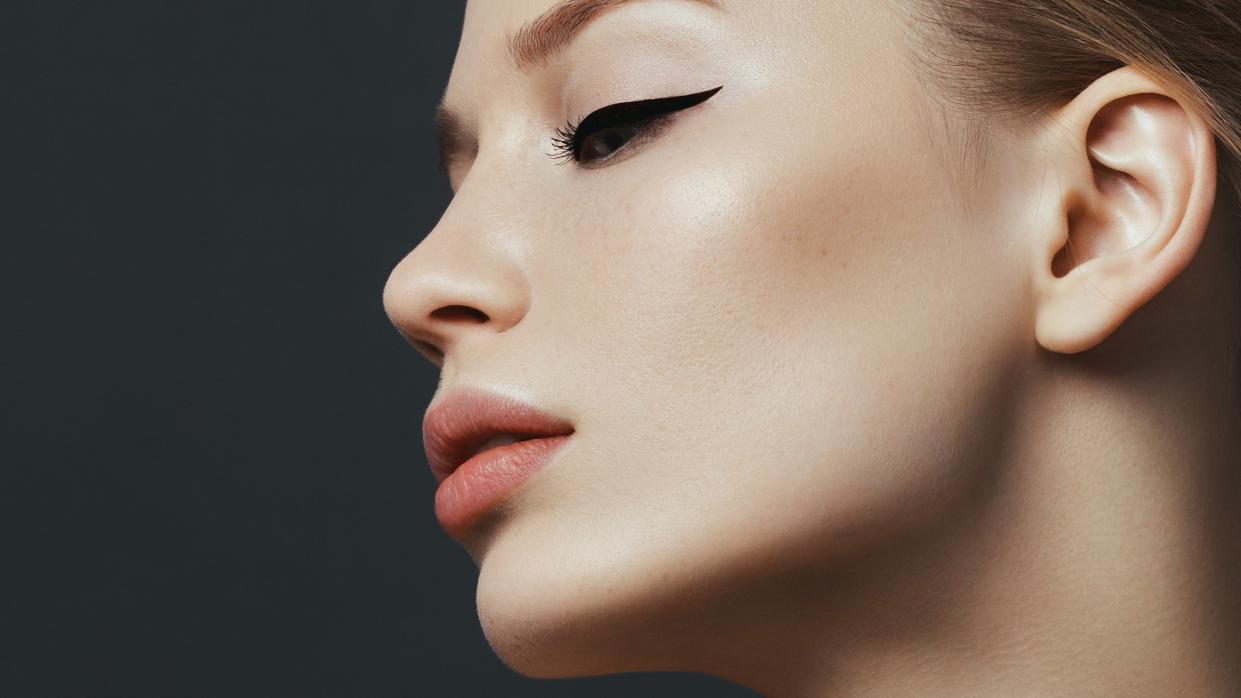What Is Tantouring? The Facial Self-Tanning Technique, Explained

Almost everything about the self-tanning process can feel intimidating. Are you going to come out orange? How much is too much? What happens if you apply it wrong? But, to be honest, if you mess up, it's not the end of the world — you can easily cover up any streakiness on your body. But when you mess up self-tanning your face, that's when things can get unsettling.
Your face is normally a little harder to disguise when you mess up your facial self-tanner application (though today's hottest and safest accessory, a face mask, helps). So how do you do self-tan your face so you look naturally bronzed and get it right every time? The answer, my friends, is tantouring.
Tantouring is exactly what it sounds like: It's tanning and contouring in one, meaning you take your facial self-tanner and apply it as you would a traditional contour product. This gives you the tan you want, including definition, making the results look more natural — plus, it lasts longer than any ol' bronzer.
To break down the process of tantouring even further, I asked Sophie Evans, St. Tropez's brand ambassador and one of the only people I trust to spray-tan my body, to weigh in with her thoughts on this self-tanning technique.
Always prep your skin.
Just like you would do with your body when you self-tan, you should always prepare your skin for application. Prior to applying tanner to the face, Evans suggests removing all makeup and exfoliating your skin.
For this, I love the Cetaphil Extra Gentle Daily Scrub, made with micro-fine granules to help buff away dry skin. Plus, it's gentle enough to use every day without damaging your skin barrier and also extremely effective in getting all the dead skin off your face.
Grab your self-tanner of choice.
"When contouring your face with self-tanner, it's always easier when you pick a product with a built-in bronzer," says Evans. The point of a built-in color, aka a "guide color", is to see exactly where you're applying product. For contouring the face, I personally recommend the Bondi Sands Aero Ultra Dark Self Tanning Foam because it's buildable. If you're looking for less definition, keep it on for less time; but if you're going for maximum intensity, allow it to sit for the full eight hours.
Oh, and don't worry if you don't have a self-tanner specifically made for the face. According to New York City-based, board-certified dermatologist Mona Gohara, facial self-tanners and body tanners are pretty much identical formulas. She says that products for the face may have a bit more pizzazz, like anti-inflammatory ingredients such as aloe to help soothe, hydrate, and make them more cosmetically elegant. But the bones in both are pretty much the same. This is because self-tanners rely on dihydroxyacetone (DHA), a sugar that safely darkens the skin in both facial and body self-tanners.
If your skin is on the sensitive side, Gohara recommends testing the tanner in a smaller spot on your skin first, just to see how it reacts, and then going in with the full tantouring experience. And don't worry, this technique won't stain your skin permanently, she says.
Pick your tool.
There are three ways you can apply the tanner to your face. First is Evans's favorite, a Beautyblender. She likes to pump a dollop of tinted tanning mousse onto a clean, flat surface and apply it to the facial contours with the Beautyblender bounce technique.
"I apply a number-three pattern to each side profile, starting from the temples, then going under the cheekbone and wrapping around under the jawline," she says.
For me, I like to use a contour brush — specifically the Huda Beauty Tantour Sculpt & Shade Brush. I use the larger end of the brush and dip it into my tanner; I then use the same number-three pattern technique I use when I contour with a cream or powder product.
Lastly, you can always apply the product with your fingers — just make sure you wash your hands as soon as you're done. No one wants Cheetos fingers.
Don't stress if you mess up.
Practice makes perfect. If you mess up, Evans recommends taking a soft, dry cloth and buffing the tanner away while it's still moveable. If you really need to start from scratch, you can use a self-tanner remover to erase your work. Right now, I'm loving the Tanologist Eraser and Primer — just one pump of this stuff and mistakes are gone. Even if you only want to tantour for a night, using this the next day (or days) after will help get the pigment off your skin.
Keep in mind that tantouring your face doesn't last as long as a traditional body self-tan will. The face is always exposed and undergoes a more thorough daily cleanse than the rest of the body. Facial self-tanning will last only about three or four days, whereas your body's self-tan can last up to 10 days.
"Be prepared to reapply the product every three days on average and lightly exfoliate and cleanse in between," says Evans. Once you get the hang of this technique, your days of worrying about an orange hue will be replaced with glowing — we promise.
All products featured on Allure are independently selected by our editors. However, when you buy something through our retail links, we may earn an affiliate commission.
More on tanning:
The Best Self-Tanners to Use on Your Face and Body All Year-Round)
These Affordable Self-Tanning Towelettes Are the Easiest (and Safest) Route to Bronze Skin)
Now, watch every method of self-tanning:
Don't forget to follow Allure on Instagram and Twitter.
Originally Appeared on Allure

